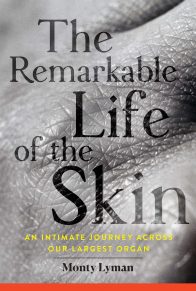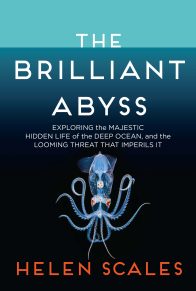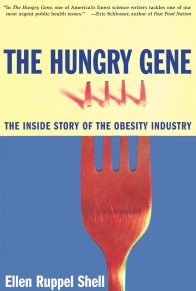The lungs are a mysterious and even mystical organ. They are our connection to the atmosphere, the organ that extracts the life force we need to exist. We have acknowledged this power for centuries. The Hebrew word ruach literally means “breath,” but also means “spirit of life.” In the book of Job, the prophet’s friend Elihu declares, “the Spirit of God has made me, and the breath of the Almighty gives me life.” This same concept is embodied in the New Testament, where the apostle John says that Jesus “breathed” on his disciples, giving them the Holy Spirit.
The life-giving power of the breath is acknowledged very early in the Bible: in the second chapter of Genesis, line 7 reads, “the Lord God formed man from the dust of the ground, and breathed into his nostrils the breath of life, and the man became a living being.” Ancient Egyptian cultures also recognized the importance of the breath, the evidence of which we see today in the many ancient statues that had their noses broken off but otherwise were left untouched. This defacement was no accident, but a deliberate act by conquering groups to take the life, in this case the breath of life, away from these icons.
Ancient knowledge about the power of the lungs was not limited to the Western world. Buddhism and Hinduism were based on an understanding of the potency of the breath. According to these disciplines, studying and harnessing the breath was the only recognized way to nirvana. Thich Nhat Hanh, a Vietnamese Buddhist monk, summarizes this ancient philosophy well in his 1975 book The Miracle of Mindfulness: “Breath is the bridge which connects life to consciousness, which unites your body to your mind.”
The emphasis on the breath is not a thing of the past for Eastern religions; breathing continues to occupy a central role in their teachings today. The Hindu name for the breath is prana, which, like the western ruach and Holy Spirit, is not just a word for air, but an acknowledgment of the breath as the ultimate life force. This knowledge is spreading back to the West through disciplines such as yoga and mindfulness, but also through techniques aimed at improving endurance, and even intimacy. These practices demonstrate that the mind and the heart follow the lungs, not the other way around.
Civilizations throughout history have equated the breath with the soul, using one term to refer to both. In ancient Egypt, it was ka; in Zulu, umoya; in ancient Greece, pneuma; in Hinduism, prana. In his 1653 Lectures on the Whole of Anatomy, William Harvey, the famous seventeenth-century British physiologist, stated simply but profoundly, “Life and respiration are complementary. There is nothing living which does not breathe nor anything breathing which does not live.”
As an organ, the lungs must do an incredible amount of work all day, every day. With an average respiratory rate of fourteen breaths per minute, and an average volume of 500 milliliters of air per breath, a typical adult inhales and exhales 420 liters of air every hour. In one day, the total is roughly 10,080 liters, a tremendous amount of gas for every human on this planet to utilize. Yet, in the absence of lung disease this work is effortlessly integrated into our lives, happening without any conscious effort.
With a signal from the brain, the diaphragm contracts downward, expanding the lungs in an instant. In this way, the breath of life is drawn into the body, and contained in it are millions of oxygen molecules. The lungs seamlessly pass the oxygen off to the red blood cells, which, with the help of the heart, deliver these molecules of life to the cells of the brain, muscle, kidneys, and other organs. Continuing the circuit, carbon dioxide, produced as oxygen is consumed by our tissues, is whisked through our veins and back to the lungs, and then expelled into the atmosphere as the diaphragm now relaxes. It is a beautiful circle of reuse and recycle, appropriately termed circulation, with the lungs as the centerpiece, the lynchpin connecting the body and the outside world.
That oxygen, life, and lungs all came into our world in relatively close succession is no coincidence. Only with oxygen and some means of extracting it are all things possible—thinking, moving, eating, speaking, and loving. Life and the breath are synonymous. Significantly, our arrival into the world as infants is considered a success when we take our first breath outside of our mother’s womb, and our leave-taking occurs when our last breath is expelled.
We are not the only ones breathing, of course. Breathing is the mechanism for harnessing the life force all over the Earth, and every organism above the level of microscopic anaerobe respires, including every single fish and animal, as well as all plants. Plants are known as oxygen producers because of photosynthesis, but they, too, constantly breathe, consuming oxygen to fuel their energy needs at the same time photosynthesis is occurring. We all utilize this communal resource called the atmosphere together.
There is something transcendent in the very structure of our respiratory system. It begins in the trachea, the single wide tube that accepts air after it comes in through the mouth or nose. The trachea branches into the bronchi of the right and left lungs, with the airways continuing to divide into increasingly smaller tubes, finally opening, deep in our lungs, into grapelike clusters called alveoli, the actual site of gas exchange. This structure, taken as a whole, resembles a tree, with its trunk and progressively smaller branches emerging into their site of gas exchange, leaves. Other examples of this configuration in nature abound—streaks of lightning converging into a single bolt only to diverge again as they approach the ground; the tributaries of a riverbed unifying into one main waterway; the human body itself, branching from its trunk to arms and legs, then fingers and toes. The lungs tap into something universal in their structure, maximizing uptake of the life force that surrounds all of us.
Science is beginning to investigate in a serious manner something humanity has known for centuries—that the breath can be used to heal the body. Every year more papers are being published on the healing power of the breath. Evidence of improvement in patients with asthma, chronic obstructive pulmonary disease, chronic pain, depression, and even cancer has been demonstrated. The scientific evidence has started to go even deeper, to the level of our blood, and even our genes. In those who practice breathing exercises, levels of inflammatory proteins in the blood are significantly lower, especially under certain types of stress. Mobilizing the power of the breath has also been shown to turn on anti-inflammatory genes and turn off pro-inflammatory ones, including genes that regulate energy metabolism, insulin secretion, and even the part of our DNA that controls longevity. Looking down the generations, those of us who practice breathing exercises today may well pass on more disease-resistant genes to our descendants tomorrow.
There is also something about the lungs—beyond their role in disease prevention—that is essential to our existence and future survival. The lungs are our youngest structure evolutionarily, having developed as our ancestors emerged from the ocean some four hundred million years ago, well after the heart and other organs had evolved. In addition to being the central organ at both birth and death, they are also the body part we must accommodate in the future if we are going to colonize other planets, or even stay alive on this one, with its radically changing climate and the constant threat of respiratory pathogens. Like our other organs, the lungs are under unconscious control of our brain, but unlike our other organs, we can control them consciously if we choose.
With this element of control, the lungs are hailed at present as an important focal point for the health and progress of society as a whole. We live in a time of extraordinary change, with technology and medicine bringing unheard-of advances in the last hundred years. Average human lifespan has recently doubled, the number of people on Earth tripled. At the same time, we have naturally held onto the same emotions of anxiety and distrust that helped us survive at a time when we faced completely different threats than we do now. For us to move forward as a people and as a planet, we are going to have to become more trusting, more cooperative. The lungs are the organ that could help us make this transition.
















